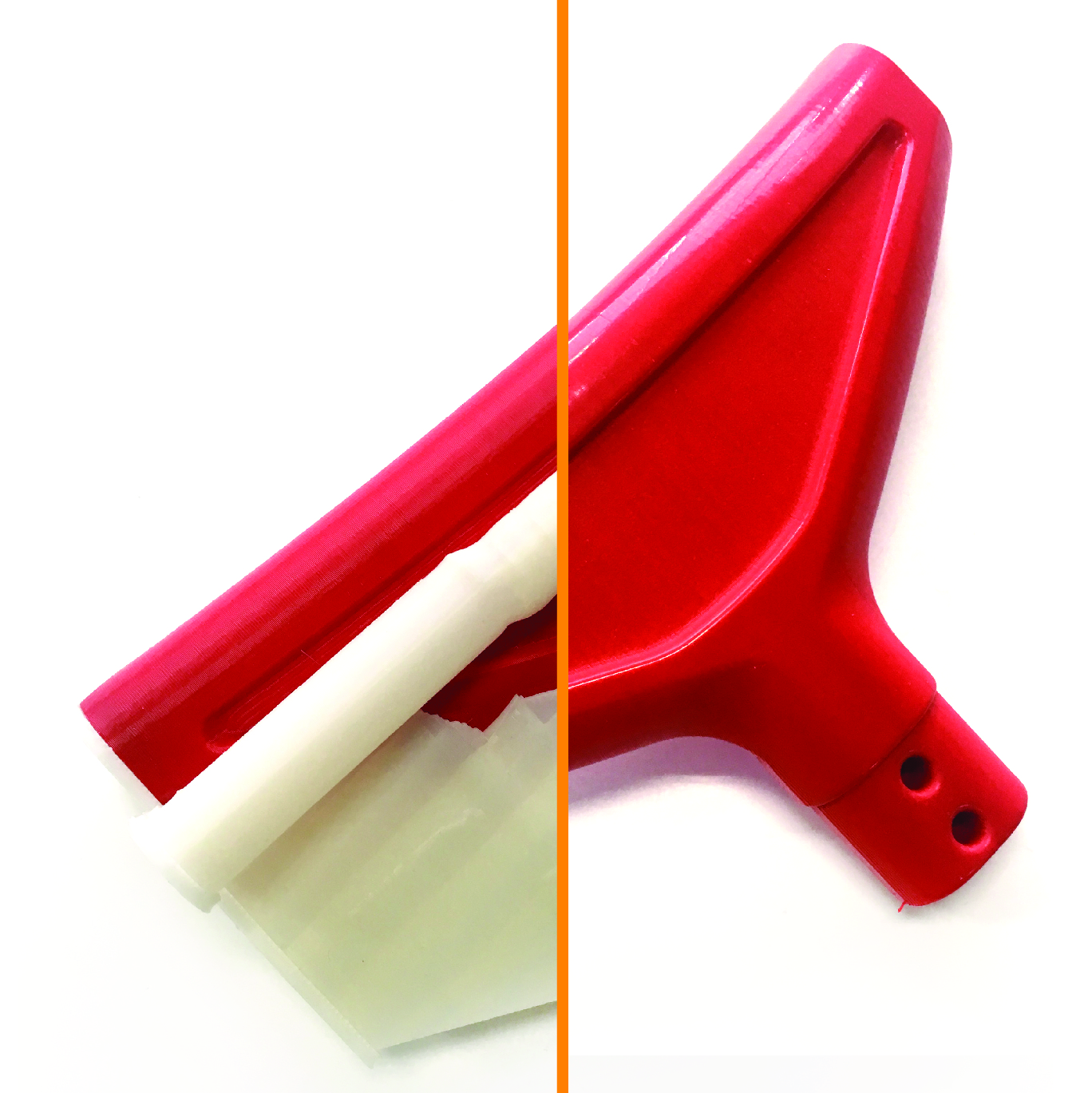Now that you’ve made an investment in 3D printers and design software for your additive manufacturing operation, your print volumes are undoubtedly scaling at a brisk pace. While the rapid throughput that 3D printing enables can boost your business, the post-printing step often falls short at keeping up with this newfound level of productivity. Unfortunately, bottlenecks in this stage are extremely common, as typical post-printing methods are archaic and overly reliant on manual labor.
The answer to this common conundrum? Digitalization. Software-driven solutions can bring your post-printing process up to speed with the rest of your workflow and connect the digital thread. So, where should you get started?
Getting Started with Automated Post-Printing
Our cutting-edge solutions are the first of their kind to effectively replace common support removal methods with automated approaches that leverage patent-pending software and exclusive chemistry technologies. This blog offers helpful insight into the differences between the various PostProcess technologies, as well as which technology is most ideal for removing structural part supports in your unique workflow. We’ll be touching on two popular print technologies, Fused Deposition Modeling (FDM) and PolyJet.
So, how do you know which of our support removal solutions is best suited for you? Of our four core technologies, two are developed for support removal:
- Volumetric Velocity Dispersion (VVD)
The patented approach utilized in our VORSA and BASE solutions. - Submersed Vortex Cavitation (SVC)
The patented approach utilized in our DEMI 400, 800, 900, and 4000 Series.
Both of these approaches utilize our AUTOMAT3D® software to customize parameters to your unique processing needs, which may then be saved as “recipes” for future use. Each option also leverages detergents specific to whichever primary polymer-based print technology you’re utilizing – material extrusion (i.e., FDM) or material jetting (i.e., PolyJet). In fact, the print technology that you’re using is going to be the most crucial deciding factor in determining if VVD or SVC is the best fit for you.
Fused Deposition Modelling (FDM)
FDM is renowned for its versatile ability to seamlessly print complex geometries. Our VVD technology is developed for the post-printing needs of intricate FDM part geometries and meant to effectively replace submersion tanks. Due to limited ultrasonics capability and temperature control, processing times in these traditional submersion tanks are often lengthy and inefficient. VVD abounds with benefits to improve FDM post-printing workflows.
- The technology employs spray nozzles that release detergent in a high flow, low-pressure technique. Combined with heating/cooling agitation, these parts remove hard-to-reach support material on FDM parts gently and efficiently.
- The spray technique of VVD prevents sparse-fill FDM parts from becoming waterlogged, allowing rates of removal to remain optimal.
- While alternative post-printing detergents are often caustic and require frequent changing, PostProcess’s proprietary detergents used with VVD can process parts 10-12x as quickly and last twice as long as the leading FDM post-print detergents.
- Companies that have implemented VVD solutions such as the BASE have experienced significant returns-on-investment, such as decreases in operator labor and a drop in the time that must be dedicated to post-printing. For example, The Toro Company averaged an 89% decrease in post-print processing times and over a 90% decrease in operator labor. Read the full case study here.
PolyJet
As PolyJet printing is especially conducive to softer materials and parts with more complex internal channels, our SVC technology is ideal for effectively breaking up and removing support material without disfiguring PolyJet parts. Traditional PolyJet support removal methods like water jetting and submersion tanks are notorious for slow-moving processing and causing damage to parts.
- SVC is our proven technology for PolyJet post-printing. Leveraging submersion techniques rather than spray methods, the technology employs a combination of heat, pump agitation, and ultrasonics to finish PolyJet parts.
- While tacky hybrid layers on PolyJet parts can be bothersome to post-print, SVC can swiftly remove this layer in a singular step.
- With agitation-driven submersion, SVC technology can more easily access the intricate internal channels of PolyJet parts. These sorts of channels may be especially prevalent in PolyJet parts created for medical or dental applications.
- SVC’s vortex pumping scheme ensures that “parts that float sink, and parts that sink float.” In other words, regardless of density or geometry, SVC will ensure that the part is uniformly exposed to the detergent and cavitation from the ultrasonics, enabling a uniform finish.
- Thanks to the calculated design of the SVC machines, parts can be loaded in and finished while still on the build tray for seamless transport between additive phases.
- As previously mentioned, PostProcess’s proprietary detergents are safer, less caustic, and hold longer lifespans than competing PolyJet detergents.
Protolabs is one of the many companies that realized significant return-on-investment with a PostProcess SVC solution, reducing labor time by 50% and effectively freeing up 20 valuable labor hours per week. Read the full story here.
Still have questions? Our Live Solution Experience tours delve into our solutions for FDM, PolyJet, and beyond. Guided by one of our expert engineers, these tours show parts being processed and our machines being run in real-time, with the opportunity to ask questions.
After You’ve Chosen Your Solution
Once you’ve invested in one of our automated solutions, a PostProcess Application Engineer will guide you through our entire installation, training, and integration (ITI) process. This includes training on the functions and capabilities of the solution and advisement on the best practices regarding the cadence of your maintenance and your revitalized throughput levels. PostProcess has immense experience across virtually every additive manufacturing material, so you can rest assured that our engineers can make recommendations specific to your particular workflow and materials. Additionally, our User Support Site features resources and manuals that are accessible whenever you need them.
Want to learn more? Head over to our comprehensive FAQ page for additional insights, or contact us at info@postprocess.com.
-> Want to connect? Contact Us
-> Return to Blog Homepage